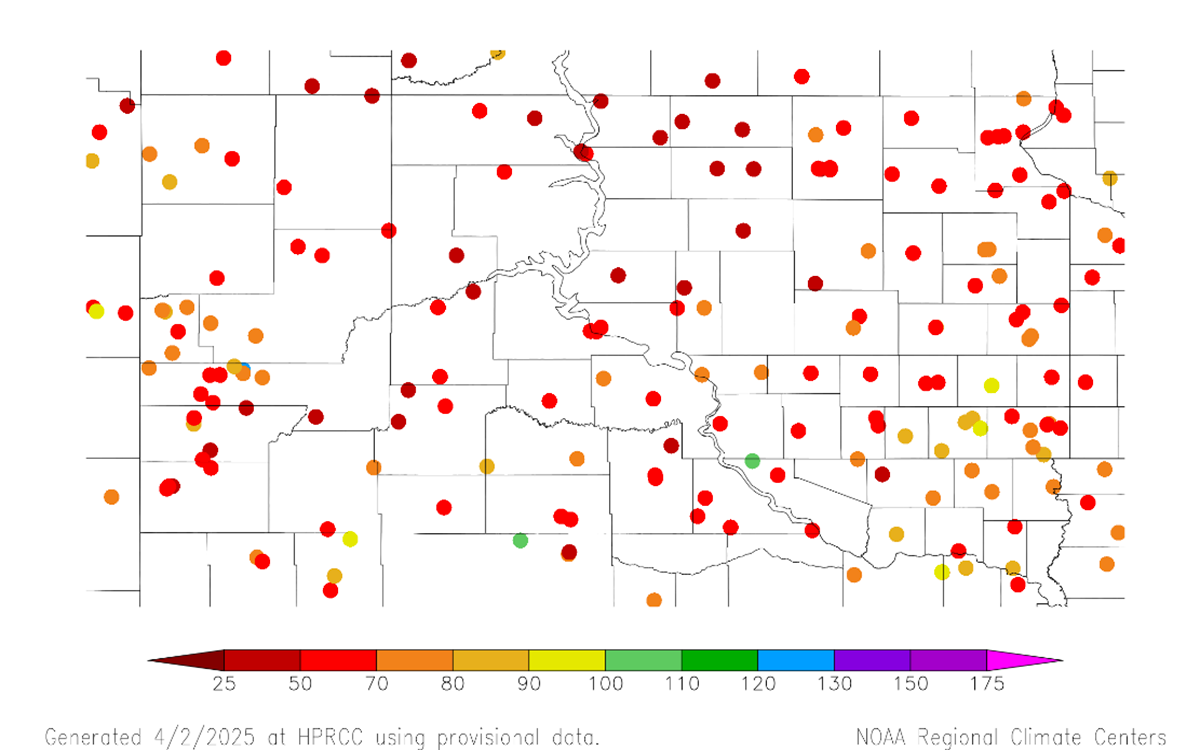
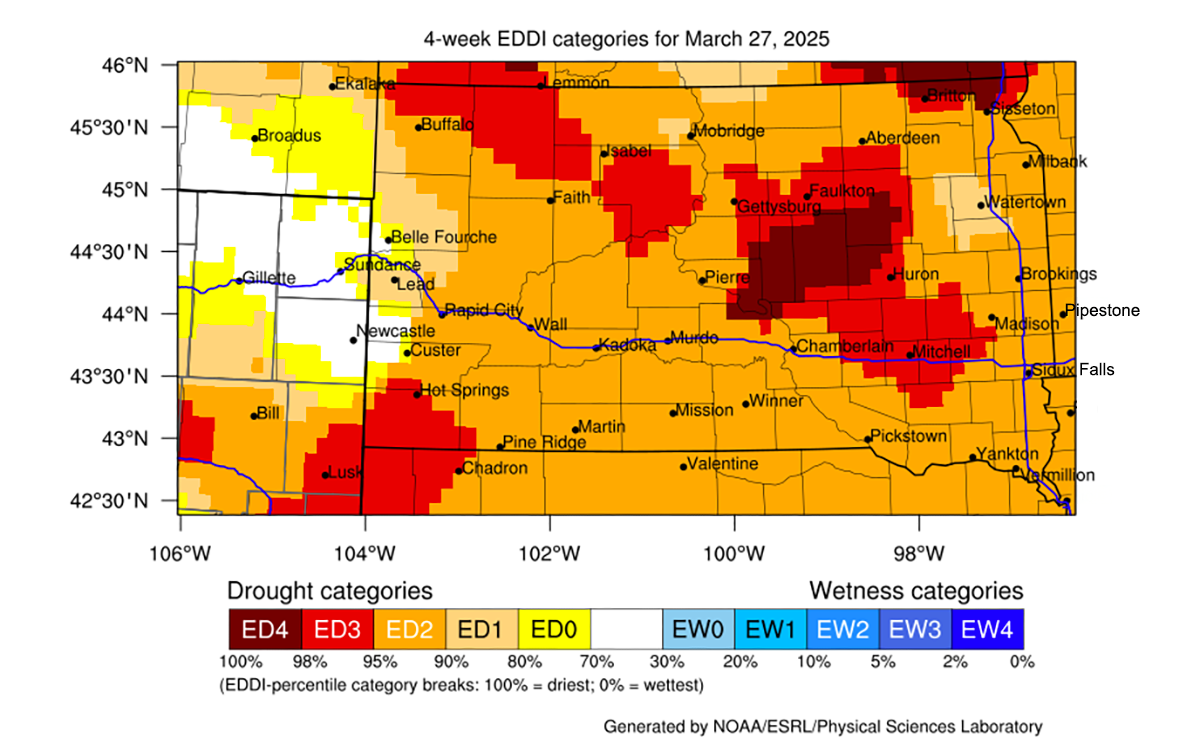
Understanding Dry Soil Conditions
According to the South Dakota Mesonet, many locations are experiencing very dry soil conditions even down to 40 inches. Looking at Lemmon specifically, the latter half of 2024 brought very dry soil (<10% moisture) in the top 8 inches (Figure 3). Even lower depths of 20 to 40 inches experienced < 20% moisture through the end of that year. Also important to note is the lack of fall precipitation (purple bars).
Looking at 2025 so far, the soil froze down to 50 inches when a cold snap hit in January, but began thawing out again in early March (Figure 4). When soils are unthawed, without cover, moisture can continue to deplete. Since thawing, Lemmon is already showing a decline in soil moisture in the top 4 inches from about 17 to 19% in early March to 13 to 15% in early April. Soil moisture remains around 9% at a depth of 8 inches, and 17% and 14% moisture at 20- and 40-inch depths, respectively.
Dry soil conditions combined with a lack of dormant precipitation typically indicate the need to reduce stocking rates or delay spring turnout. Given that many areas of the state are starting out the spring season with soil moisture behind the curve, many producers will need to adjust their management plans. At this point, we need above normal precipitation in April, May, and June to cultivate a normal growing and grazing season.
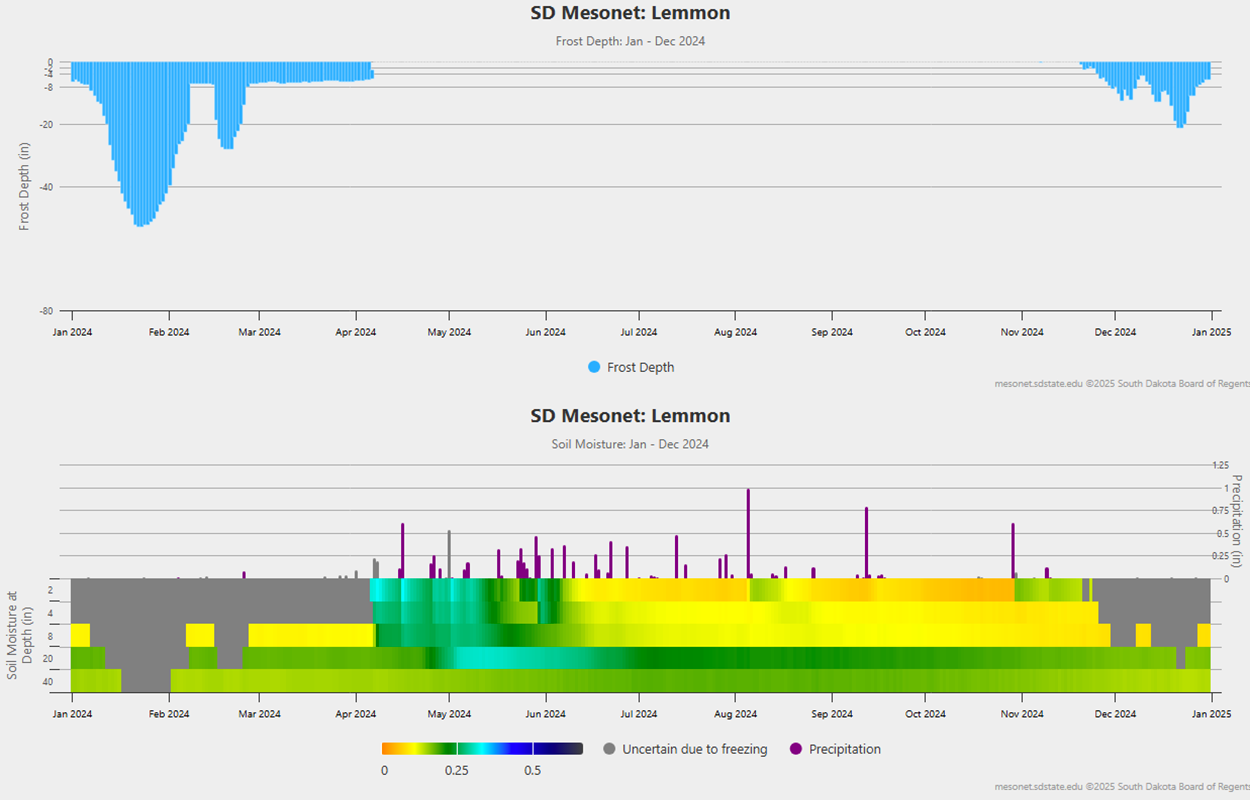
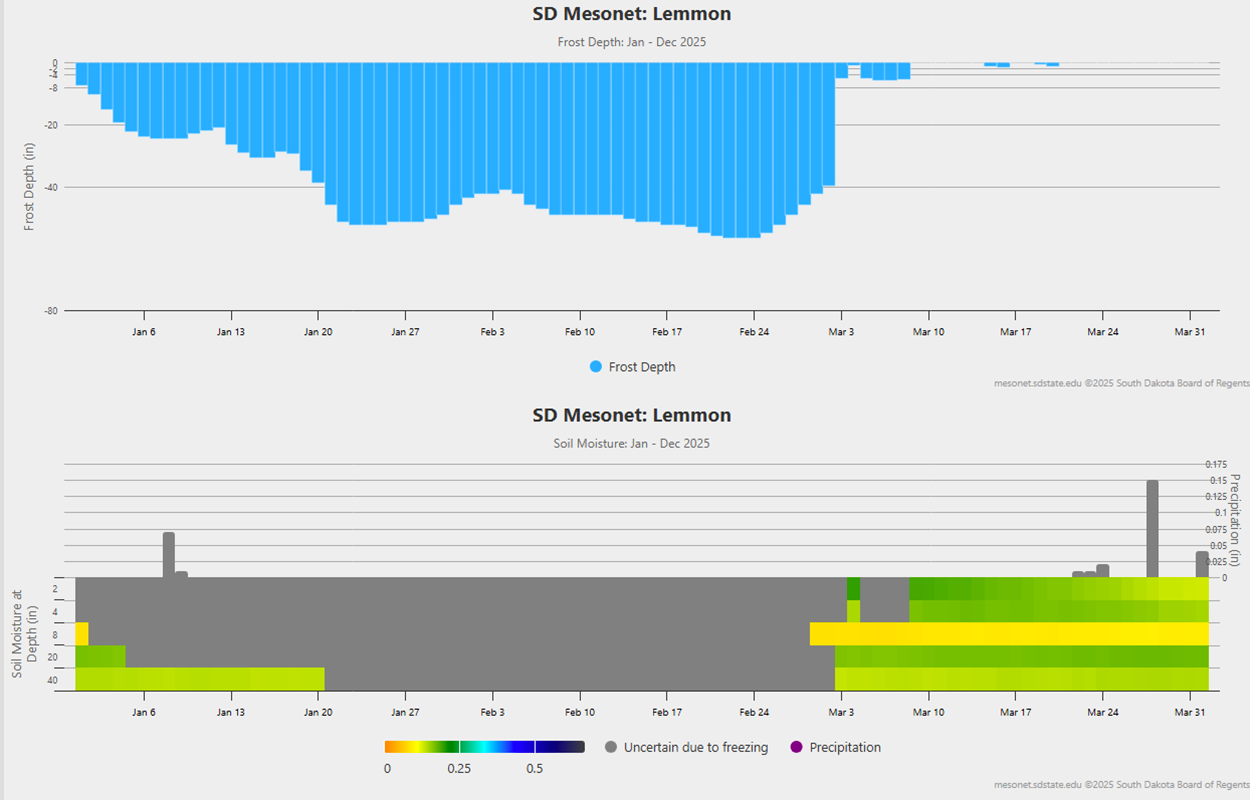
The Importance of Spring Precipitation
In the Northern Great Plains, spring precipitation is extremely influential on the amount of forage produced during the growing season (Smart et al., 2021). However, temperature and precipitation during the dormant season determines where we start the race for the spring green up. When dormant season precipitation is scarce, combined with warmer temperatures, moisture is quickly depleted from thawed soils.
Currently, we are so far behind on precipitation since October 1st, 2024 (Figure 1), that we would need above average precipitation for the next three months (April, May, and June) in order to get close to normal growing season conditions.
A recent review looked at historical precipitation data from April, May, and June, to determine how often drought years and wet years occur across the Great Plains region (Smart et al., 2021). If less than 75% of normal precipitation occurred, it was classified as a drought year. If more than 125% of normal precipitation occurred, it was classified as a wet year. In Cottonwood, South Dakota, 24 out of 104 years were wet. In Highmore, South Dakota, 27 out of 120 years were wet. Combined, that’s about a 23% historical chance of above average April, May and June precipitation.
What Are Current Climate Outlooks Predicting?
Looking at spring, the outlooks currently show below average seasonal precipitation chances (Figure 5) and equal chances of seasonal temperature (Figure 6). Currently, the chances of receiving above average precipitation for the next three months are slim. Additionally, warmer temperatures continue to deplete soil moisture in the meantime. Although there’s nice weather for spring calving, it doesn’t bode well for this coming summer.

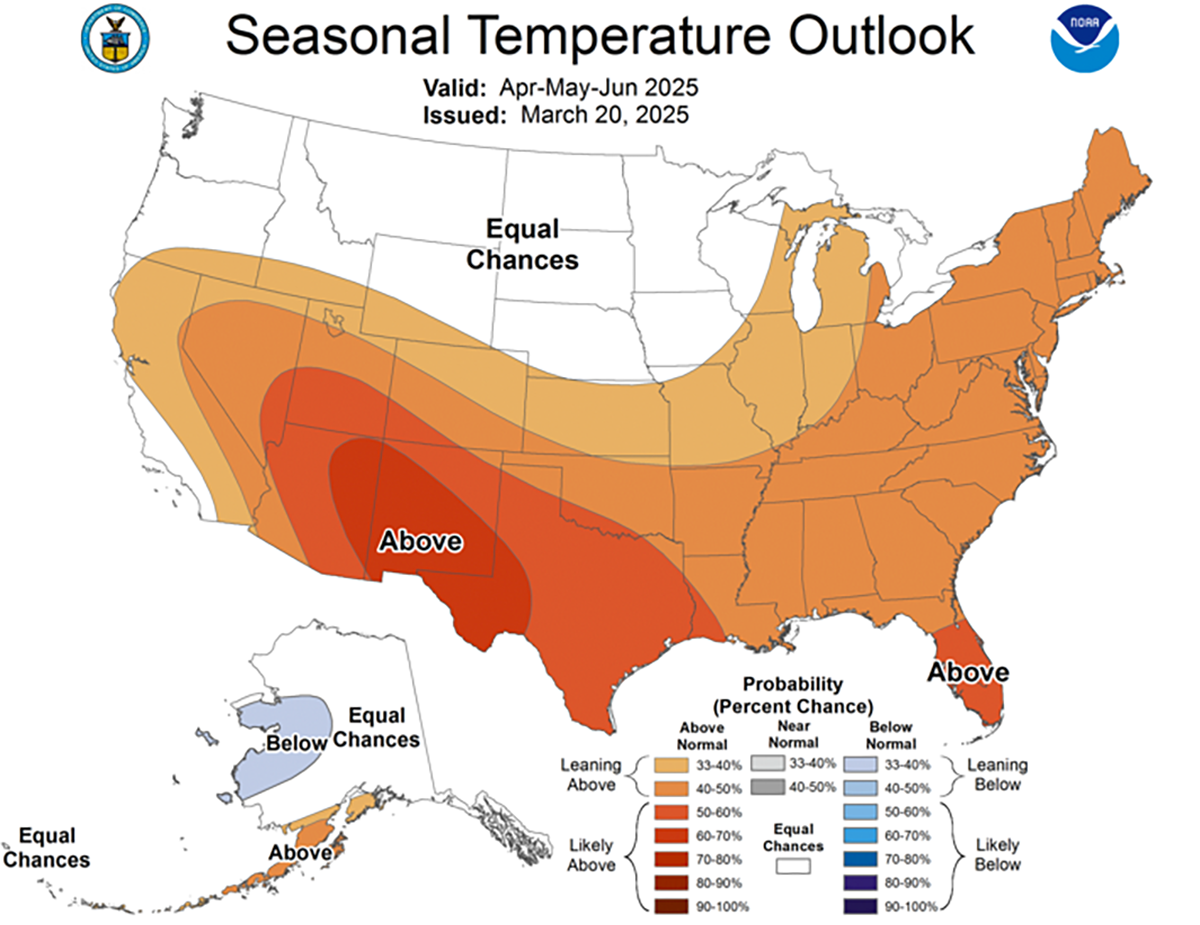
What Are Your Plans for Summer?
April 1 is a suggested trigger date to investigate the following questions:
Moisture/Climate
- How much precipitation was received:
- During last year’s growing season?
- Since October 1, 2024?
- Since January 1, 2025?
- What are current weather outlooks predicting in the coming days, weeks, and months?
- What are current drought conditions in your location?
- How much soil moisture exists now?
Forage
- What is the current condition of your pastures? How much standing forage, soil cover, etc.?
- What are your current feed resources?
- What are the feed markets indicating? Can you take advantage of feed prices and lay in an extra feed supply now?
- Are there alternative feed resources you could take advantage of (grazing cover crops, grazing corn residue, etc.)?
- Are there alternative grazing strategies you could try (rotational grazing, targeted species grazing, etc.)?
Livestock
- Are you prepared to feed livestock longer if grazing is delayed or reduced?
- What are your culling/de-stocking strategies?
- Which animals will be the first to go?
- What are the cattle markets indicating?
- Can you take advantage of prices by de-stocking now?
What Is Your Plan for the 2025 Grazing Season?
Your management determines the extent to which drought and other uncontrollable events will impact your business. Proactive decision making is the key to ranch and drought management. It is better to make decisions while you still have choices than to wait and be forced into a decision you don’t want to make.
Given current soil moisture conditions and weather outlooks, delayed turnout, reduced grazing, and reduced stocking rates are a very real possibility. Due to the lack of dormant-season precipitation, it is more important than ever to get adequate spring precipitation. Everyone should take time to assess their resources and regularly monitor soil moisture and weather outlooks in preparation for the 2025 grazing season. Do you have the information and resources you need to make decisions?
Source : sdstate.edu